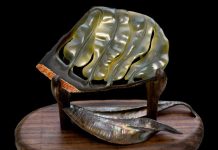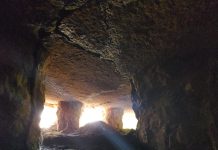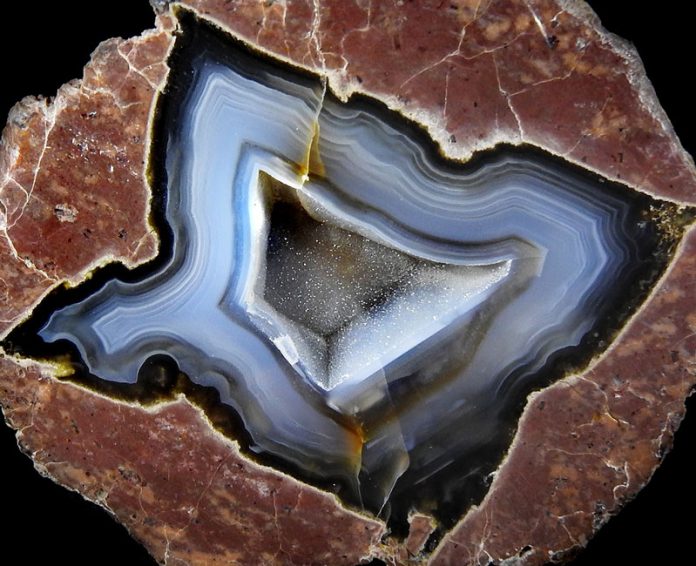
Quartz minerals are usually thought of as large single crystals. Microcrystalline quartz, however, is dense with crystal grains so small that an optical microscope is necessary to view the individual crystals. When those crystals are so small they cannot individually be seen using a specialized microscope, they are called cryptocrystalline.
Chalcedony
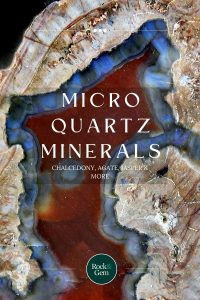
The general term, chalcedony, refers to varieties of quartz where microcrystalline and cryptocrystalline crystals intertwine and grow together. There are many varieties of chalcedony in different colors and patterns. They are plentiful and popular. Gem-grade chalcedony is generally light blue, white or gray and often called holly blue. Chalcedony’s name is said to come from the Greek port of Chalcedon.
Varieties of Microcrystalline Quartz
Agate – Curved banded variety
Jasper – Opaque, red or green varieties
Chert – General name used for compact, hard rocks that contain microcrystalline quartz
Flint – Afiner-grained, harder type of chert, Ohio’s official gemstone
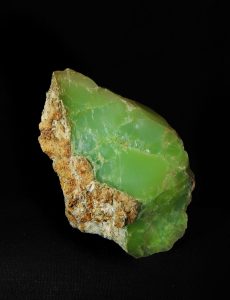
Carnelian – Orange-red opaque mineral
Onyx – Parallel banded variety
Sardonyx – Red sard and white chalcedony
Chrysoprase – Translucent, apple-green color
Bloodstone – Dark green with red spots of iron oxide
Petrified Wood – Over time chalcedony replaces wood while preserving the growth rings
Happy Micro Quartz
Microcrystalline quartz has so many beautiful varieties that it’s often interwoven into our pop culture. It’s a happy birthday for these micro quartz birthstones – bloodstone (May) and sardonyx (August). Chalcedony itself is said to bring stability and balance to its bearer.
This story about micro quartz minerals previously appeared in Rock & Gem magazine. Click here to subscribe. Story by Richard Gross and Pam Freeman.



